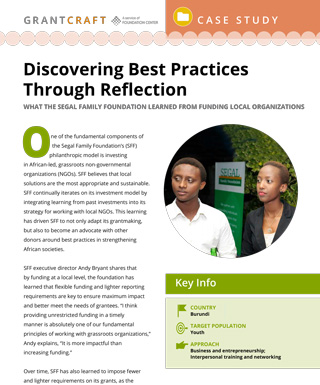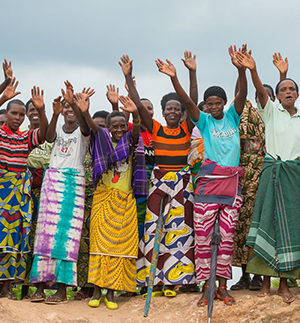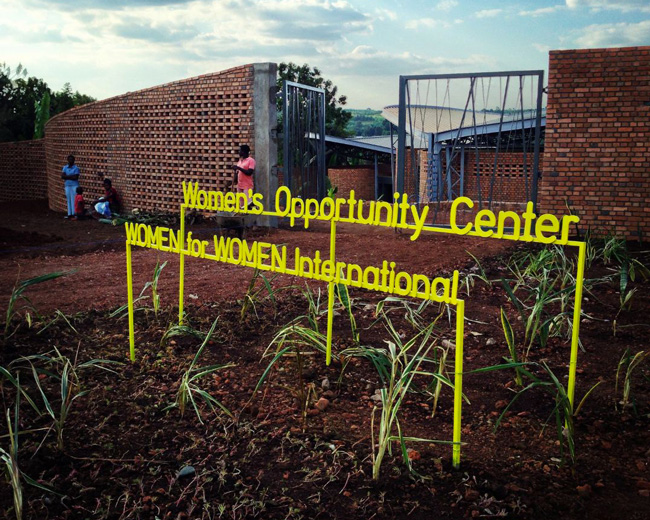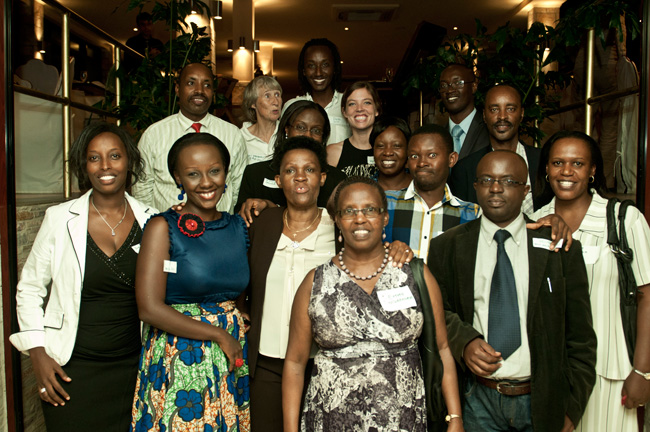Discovering Best Practices Through Reflection What the Segal Family Foundation Learned From Funding Local Organizations
One of the fundamental components of the Segal Family Foundation’s (SFF) philanthropic model is investing in African-led, grassroots non-governmental organizations (NGOs). SFF believes that local solutions are the most appropriate and sustainable. SFF continually iterates on its investment model by integrating learning from past investments into its strategy for working with local NGOs. This learning has driven SFF to not only adapt its grantmaking, but also to become an advocate with other donors around best practices in strengthening African societies.
SFF executive director Andy Bryant shares that by funding at a local level, the foundation has learned that flexible funding and lighter reporting requirements are key to ensure maximum impact and better meet the needs of grantees. “I think providing unrestricted funding in a timely manner is absolutely one of our fundamental principles of working with grassroots organizations,” Andy explains, “It is more impactful than increasing funding.”
Over time, SFF has also learned to impose fewer and lighter requirements on its grants, as the foundation gained a deeper understanding of how to improve collaboration with grantees. Andy explains, “We’ve tried to ask for only key information in each individual project to ensure we are not gathering In response, in 2013, SFF developed the Social Impact Incubator (SII), a capacity-building program designed to give local organizations the coaching, skills, and networks needed to achieve their full endless data for data’s sake.” Andy recognizes that one of SFF’s strengths comes from having a team on the ground. This gives the foundation a more thorough understanding of the context, development, and funding trends. “If you are funding from a distance, parachuting in for diligence visits only on rare occasions, it’s harder to develop that relationship of trust with your partner, so of course you’re going to build parameters and restrictions.”
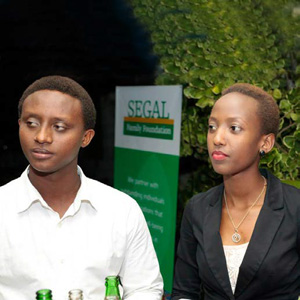 Andy goes on to explain that it really comes down to knowing the grantee well and building that relationship of trust. “If trust is there, then a donor can trust that the grantee is going to put the funding to its best use.” When SFF decided it wanted to start working in Burundi, it found that there was a lack of confidence within civil society, and between donors and local organizations. The funding landscape in Burundi has disenfranchised local organizations, as these compete over limited funding opportunities and in turn are forced to adapt their missions to be more in line with those of donor organizations. visions for their communities. At the same time, the SII provides donors a platform to engage seasoned local grantees. The SII not only works with local entrepreneurs and collectives, but also aims to educate funders on the ideal role of grassroots organizations: designing programs based on knowing their communities and their needs. Andy shares, “Our hope is that, over time, international NGOs and donors will be able to provide more unrestricted funding to organizations and shift some of their funding practices to be more flexible and to support local ideas and local missions.”
Andy goes on to explain that it really comes down to knowing the grantee well and building that relationship of trust. “If trust is there, then a donor can trust that the grantee is going to put the funding to its best use.” When SFF decided it wanted to start working in Burundi, it found that there was a lack of confidence within civil society, and between donors and local organizations. The funding landscape in Burundi has disenfranchised local organizations, as these compete over limited funding opportunities and in turn are forced to adapt their missions to be more in line with those of donor organizations. visions for their communities. At the same time, the SII provides donors a platform to engage seasoned local grantees. The SII not only works with local entrepreneurs and collectives, but also aims to educate funders on the ideal role of grassroots organizations: designing programs based on knowing their communities and their needs. Andy shares, “Our hope is that, over time, international NGOs and donors will be able to provide more unrestricted funding to organizations and shift some of their funding practices to be more flexible and to support local ideas and local missions.”
A key goal of the SII is for participating organizations to be strengthened enough to cultivate other funding. SFF invested in building relationships, engaging major stakeholders and big INGOs, and leveraging its own role as an international donor, to bring different entities to the same table. “After seven months of training participants in the incubator, it’s easy for us to make the connections because we do the groundwork for the donors; we’re vetting and then vouching for these local groups,” explains Andy, “It’s simply to be proactive advocates because donors take donor referrals with so much more stock than when grantees reach out on their own accord in search of funding. And, it’s easier for funders who can’t be on the ground like we can to trust grantees. Building that relationship from a distance would otherwise be difficult.” SFF tries to make the case to new donors that there are innovative Burundian organizations that are worth investing in and that can be easily connected with through SII. “We have a ways to go but are excited about the impact of collaboration and trust we’re seeing on the ground,” Andy continues, “We have learned from our team on the ground to be more ambitious around influencing philanthropy and we are now wondering if this hit the right tone in Burundi, are there opportunities to do something similar in other countries?”
This case study was developed for Foundation Center's Equal Footing project.
